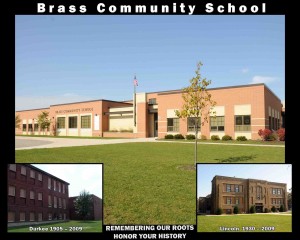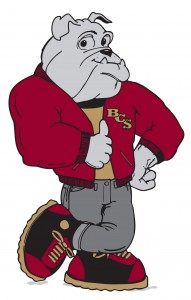About Brass Community School
School Highlights
- Brass’s family support model helps students achieve more through learning in school and at home.
- Students are equipped with additional supports through a variety of community partnerships that help ensure success, such as the United Way Readers are Leaders; KABA and KAFASI mentoring programs; YMCA; and the ELCA Outreach Summer Camp.
- On-site counseling is offered to students who may be struggling with mental health issues of their own or within their household.
- Clubs and intramurals are offered to students to help round out their educational experience.
- Through daily morning meetings, Brass students create a sense of belonging with each other and the staff.
School Hours
*Monday – Thursday 8:50 am – 3:50 pm
Preschool Session AM- 8:50 a.m. – 11:57 a.m.
Preschool Session PM- 12:35 a.m. – 3:50 p.m.
Doors open at 8:35 a.m. All students should enter from the back playground doors.
Students are tardy at 8:50 a.m. if not in their seats.
Note: Students should be in their seats by 8:45 a.m. ready to go. Breakfast will be served at that time.
*Friday 8:50 am – 12:46 pm
No school for Pre-K
Mission Statement
The mission of Brass Community School, a neighborhood of learners who celebrate our multicultural diversity, is to inspire all children to reach their highest academic and social potential by providing quality education in a safe and welcoming environment.
“Working Together, Expecting Excellence”
“All Means All”
History
Brass Community School construction was completed in time to open its doors for the 2008-2009 school year. The school combined staff and students from Durkee Elementary School (1905 – 2008) and Lincoln Elementary School (1930-2008). Both schools were rich with Kenosha history and served many residents of Kenosha over the years. Built on the former site of the American Brass Company, Brass Community School services families who live within a large area of Kenosha’s east side.
 Picture made available by Lifetouch Portraits
Picture made available by Lifetouch Portraits
Literacy (Reading) Instruction
Reading has changed quite a bit over the years, so we understand how our parents feel when they hear words like Guided Reading, Writer’s Workshop, and Reader’s Workshop. These fancy words often times boil down to the same fundamentals everyone grew up with, so we try our best to educate everyone throughout the year as to what these terms mean. Parents often times also wonder how we will have 30 students in a classroom and still be productive. Well, these are the systems of instruction that allow us to work so efficiently regardless of the number of students per classroom. The simple definitions are as follows:
Guided Reading: A way to teach children a variety of skills resulting in a child’s ability to read with greater independence. At school, it involves a teacher reading to the class while modeling different strategies for students and then working with small groups of students on specific skills while students practice strategies on their own (silent reading). While in small groups, teachers ask probing questions and help children think their way through different levels of books. As a result, students improve their reading skills and become more confident in reading on their own.
Reader’s and Writer’s Workshop: A way to teach reading and writing through the use of large and small group instruction. Teachers will work with small groups of students on similar skills while other students work their way through a variety of center activities which are focused on specific skills. Large group instruction is minimal as the majority of the work is done is small groups with the teacher.
If you were to observe a lesson, you would see students working independently either at their assigned areas in desks, or comfortably around the room. These students are working in their center areas or independent work area. The teacher will be working with a small group of students on a specific set of skills. This group will usually last from 20-30 minutes. When finished, the students rotate to new areas, therefore keeping things different and engaging for students. While each lesson begins and ends with large group discussion, the majority of instructional time is in small groups. Not only is this best practice for teaching reading, it is also excellent structure for larger groups of students.
Numeracy (MATH) Instruction
Numeracy or math instruction will continue to be taught using the same curriculum as we have in years past (Everyday Math 3). However, teachers will be utilizing instructional time the same way that they do for reading by implementing Guided Math instruction. Guided math calls for the students to receive a large group lesson which is usually about 20 minutes long and then students break into a group rotation for repeated practice, application, and activities related to what they are learning. Students rotate through centers spending lots of time on a variety of different activities, one of them being able to work directly with the teacher on the skills being taught. This is a very exciting change for our math program and is certainly one that our teachers and students enjoy!
How will I know if my child is growing academically and socially?
In addition to the ability to access their child’s information online whenever they choose to do so using our new student software management program called Infinite Campus (beginning Fall 2014), each parent/guardian will receive the following every quarter:
- Standards-based report card: On this report, you will not see a traditional grade, but rather a specific record of whether or not your child has demonstrated proficiency on each standard taught. For example, if the standard is that the student is to compare two objects by determining the area of each object, the student will receive a score based on whether or not they could complete the task and with how much assistance required to do so. Scores received are as follows:
- 4 = Meeting Standard: The student can perform this standard consistently and independently.
- 3 = Approaching Standard: The student is usually independent in performing this standard. The student may need some support and/or need increase consistency in performance.
- 2 = Progressing Toward Standard: The student usually needs support in performing this standard. The student is sometimes able to perform this standard independently but often requires support.
- 1 = Beginning Work on Standard: The student needs frequent support to perform this standard.
NOTE: Parents are cautioned NOT to try and equate the number scale to the traditional grading methods using letters (A, B, C, D or F) as these two systems are COMPLETELY DIFFERENT. Our new way of grading focuses on the child’s ability to improve over time, not judge them on each individual moment. For example, if you have two students in the same class. Student A receives all A’s and B’s the first 4 weeks of the quarter and then receives D’s and F’s the last 4 weeks. Student B receives D’s and F’s the first 4 weeks and then finally understands the material and gets A’s and B’s the last 4 weeks. Both students show different growth patterns that would not be seen on a traditional report card. Standards Based Report Cards reveal the fact that students are beginning to understand and are now able to or not able to perform certain standards. With the traditional standards, students may know how to do the task, but blow it on one assignment or assessment and then earn a bad grade. We are focused on whether or not a student can learn a standard, demonstrate their understanding of that standard, and then apply it to the world around them. We then report to parents as to what level of support they need to perform each standard.
What is happening on Friday afternoons when the children are not in school?
At Brass Community School we place a very high value on our Friday time together. While we can always use more time with children, we spend a few hours every Friday doing the following:
- Curriculum Planning: As an original pilot school for Common Core State Standards in the Kenosha Unified School District, we have gone through great lengths to ensure that every staff member understands what the standards are, expected manner of implementation, and the best way to use related assessments for accountability. These activities will help us make sure that every child is receiving the curriculum expected by, not only KUSD, but also by the State of Wisconsin.
- Professional Development: Just like every teacher learns best a certain, different way, every child within each classroom learns in their own unique way. For teachers to be successful with their students, time must be spent making sure teachers are armed with the best strategies, materials, research, and procedures possible. Specific Fridays are set aside to target areas needing development within the staff.
- Data Analysis: Every time an assignment or assessment is given, that information is collected and reviewed by teachers to look for patterns. Whether it is a pattern for an individual child or an entire class, the results are used to determine areas in need of improvement. That improvement will come from individual/class interventions, changes in instructional practices, or shifts in the delivery of the curriculum. Our educational process is a scientific one that is rooted in a belief that all children can and will learn if we can get them to give us their best effort and believe in themselves.
